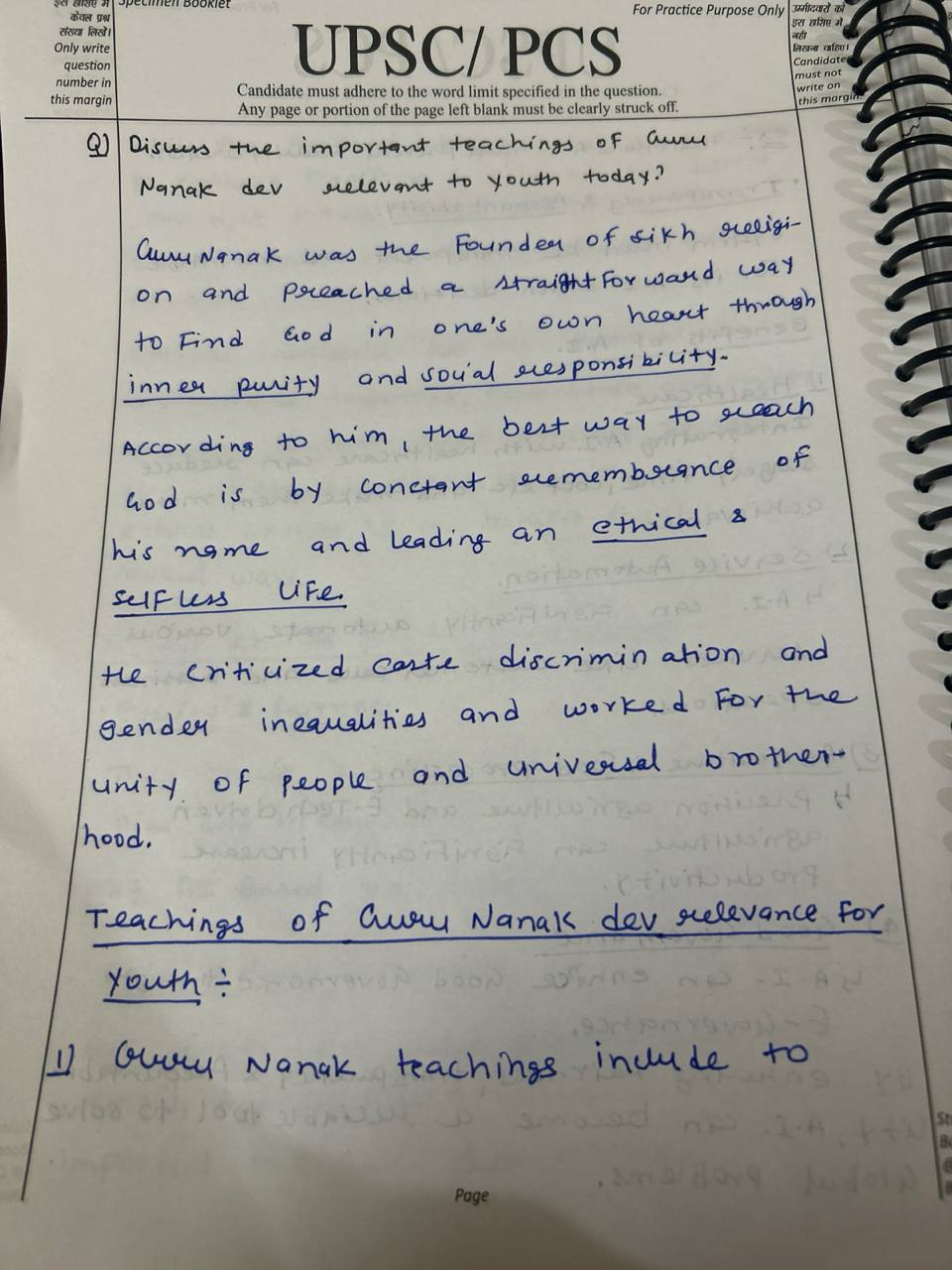Examine government programs like the Sugamya Bharat Abhiyan that aim to promote financial inclusion for people with disabilities. Talk about the difficulties that people with disabilities encounter when trying to access financial services like banking, insurance, and credit.
Persons with disabilities often encounter several challenges in the workforce that can limit their career advancement, access to accommodations, and overall employment experience. Here's a detailed discussion of these challenges and an evaluation of government efforts to promote employment for persoRead more
Persons with disabilities often encounter several challenges in the workforce that can limit their career advancement, access to accommodations, and overall employment experience. Here’s a detailed discussion of these challenges and an evaluation of government efforts to promote employment for persons with disabilities, such as through the Scheme for Employment of Persons with Disabilities.
Challenges Faced by Persons with Disabilities in the Workforce
- Limited Career Advancement Opportunities:
- Promotion Barriers: Persons with disabilities may face barriers to career advancement due to biases and misconceptions about their capabilities. Limited access to professional development opportunities can also impact their career growth.
- Glass Ceiling Effect: There may be an unspoken “glass ceiling” that prevents persons with disabilities from reaching higher levels in an organization, regardless of their skills or qualifications.
- Lack of Reasonable Accommodations:
- Inadequate Modifications: Many workplaces do not provide necessary reasonable accommodations, such as accessible workspaces, adaptive technologies, or flexible work arrangements, which are essential for persons with disabilities to perform their jobs effectively.
- Cost Concerns: Employers may be reluctant to provide accommodations due to perceived high costs, although many accommodations are low-cost or cost-neutral.
- Discrimination and Bias:
- Prejudice: Negative attitudes and stereotypes about disability can lead to discrimination in hiring, performance evaluations, and day-to-day interactions within the workplace.
- Unconscious Bias: Employers may hold unconscious biases that affect their decisions regarding hiring, promotion, and job assignments, leading to inequitable treatment of employees with disabilities.
- Inadequate Accessibility:
- Physical Barriers: Workplaces may have physical barriers, such as stairs or inaccessible restrooms, which hinder the ability of persons with disabilities to navigate and work effectively.
- Digital Accessibility: Digital platforms, including online applications, communication tools, and work-related software, may not be accessible to persons with disabilities, impacting their ability to perform their job functions.
- Limited Awareness and Training:
- Lack of Training: Employers and HR professionals may lack training on disability inclusion and accessibility, leading to insufficient support and understanding of the needs of employees with disabilities.
- Awareness Gaps: There may be limited awareness among both employers and employees about the benefits of an inclusive workplace and the legal requirements for accommodating persons with disabilities.
Government Efforts to Promote Employment
- Scheme for Employment of Persons with Disabilities:
- Objective: The Scheme for Employment of Persons with Disabilities, launched by the Government of India, aims to promote the employment of persons with disabilities in the public and private sectors by providing various support mechanisms.
- Components:
- Subsidies and Incentives: The scheme provides financial subsidies and incentives to employers who hire persons with disabilities, helping offset the costs associated with accommodations and support.
- Training and Skill Development: The scheme supports training programs and skill development initiatives to enhance the employability of persons with disabilities and improve their job prospects.
- Employment Services: It includes job placement services and support for creating inclusive workplaces.
- Legislative Framework:
- Disability Rights Legislation: The Rights of Persons with Disabilities Act (RPWD Act) in India mandates non-discrimination and requires employers to provide reasonable accommodations for employees with disabilities.
- Equal Opportunity Policies: Various policies and regulations aim to ensure equal opportunities and prevent discrimination against persons with disabilities in the workplace.
- Accessibility Initiatives:
- Accessibility Standards: Government initiatives focus on setting and enforcing accessibility standards for workplaces, including physical accessibility and digital inclusivity.
- Support for Accessible Technologies: Programs that support the development and implementation of accessible technologies and tools help ensure that employees with disabilities can perform their jobs effectively.
- Awareness and Training Programs:
- Awareness Campaigns: Government-led campaigns and initiatives aim to raise awareness about disability inclusion and the benefits of diverse workplaces.
- Training for Employers: Training programs for employers and HR professionals are designed to enhance understanding of disability issues and improve practices related to inclusion and accommodation.
Evaluation of Government Efforts
- Strengths:
- Financial Incentives: The provision of financial subsidies and incentives helps encourage employers to hire and retain persons with disabilities, making it more feasible for them to provide accommodations.
- Skill Development: Training and skill development programs contribute to enhancing the employability of persons with disabilities and improving their career prospects.
- Legal Protections: The RPWD Act and other legislative measures provide important protections and create a legal framework for promoting equal opportunities.
- Challenges:
- Implementation Issues: There may be challenges in the effective implementation of policies and schemes, including delays in processing applications and inconsistent application of standards.
- Limited Reach: Some initiatives may not reach all regions or sectors equally, particularly in remote or underserved areas.
- Lack of Awareness: Despite efforts, there may still be a lack of awareness among employers and the public about the benefits of inclusive practices and the specific needs of employees with disabilities.
- Barriers to Effective Employment:
- Insufficient Support: The level of support provided by government schemes may not always meet the diverse needs of persons with disabilities, and some individuals may still face gaps in support.
- Cultural and Attitudinal Barriers: Persistent cultural attitudes and biases about disability can impact the effectiveness of policies and limit their impact on workplace inclusion.
Recommendations for Improvement
- Enhance Support Services: Improve the range and depth of support services provided under employment schemes, ensuring they address the diverse needs of persons with disabilities.
- Strengthen Implementation: Address implementation challenges by streamlining processes and ensuring consistent application of policies and standards across sectors and regions.
- Increase Awareness: Continue and expand awareness campaigns to educate employers, employees, and the public about disability inclusion and the benefits of diverse workplaces.
- Improve Accessibility: Invest in improving physical and digital accessibility in workplaces to ensure that persons with disabilities can perform their job functions effectively.
- Provide Comprehensive Training: Offer more comprehensive training programs for employers and HR professionals to enhance their ability to support and include employees with disabilities.
By addressing these recommendations and building on existing efforts, governments can further promote the employment and inclusion of persons with disabilities, contributing to a more equitable and diverse workforce.
See less


Persons with disabilities often encounter significant challenges in accessing financial services like banking, insurance, and credit. These challenges can stem from physical, informational, and systemic barriers. Here’s an overview of these challenges and an assessment of government initiatives aimeRead more
Persons with disabilities often encounter significant challenges in accessing financial services like banking, insurance, and credit. These challenges can stem from physical, informational, and systemic barriers. Here’s an overview of these challenges and an assessment of government initiatives aimed at promoting financial inclusion, such as the Sugamya Bharat Abhiyan.
Challenges in Accessing Financial Services
Government Initiatives to Promote Financial Inclusion
Barriers to Effective Implementation
Recommendations for Improvement
By addressing these challenges and building on existing initiatives like the Sugamya Bharat Abhiyan, governments and financial institutions can make significant strides toward achieving greater financial inclusion for persons with disabilities.
See less